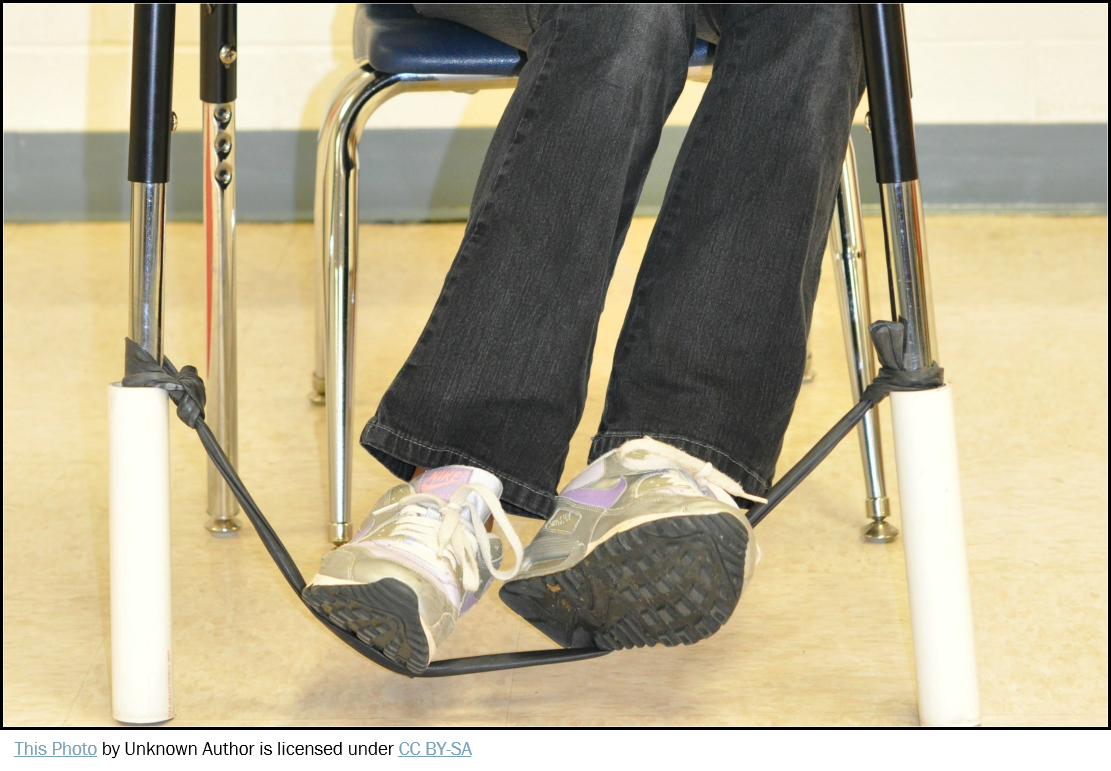 Children’s fidgeting has always been the bane of classroom teachers and parents alike. It has been regarded as one of the ”warning signs” of attention deficit hyperactivity disorder (ADHD) as measured by so-called ”objective” rating scales used to diagnosed for ADHD, and is part of the diagnostic criteria in the psychiatrist’s bible The Diagnostic and Statistical Manual. Now, however, we’re beginning to form an entirely different opinion about fidgeting and ADHD-diagnosed kids. It turns out that research suggests it’s actually GOOD for ADHD-labeled children to fidget – it HELPS them to focus their attention. Keep in mind that the typical child identified as ADHD is UNDER-stimulated and needs a higher dose of stimulation than the average Joe (this seems paradoxical, but it isn’t – it all has to do with the novelty-seeking machinations of the neurotransmitter dopamine and other brain chemicals). Fidgeting actually provides that higher dose of stimulation that they need to be in their optimal range of stimulation. Julie B. Schweitzer, who did some of the research on fidgeting and ADHD suggests that fidgeting probably increases the mental arousal for kids in the same way that psychostimulants do.
Children’s fidgeting has always been the bane of classroom teachers and parents alike. It has been regarded as one of the ”warning signs” of attention deficit hyperactivity disorder (ADHD) as measured by so-called ”objective” rating scales used to diagnosed for ADHD, and is part of the diagnostic criteria in the psychiatrist’s bible The Diagnostic and Statistical Manual. Now, however, we’re beginning to form an entirely different opinion about fidgeting and ADHD-diagnosed kids. It turns out that research suggests it’s actually GOOD for ADHD-labeled children to fidget – it HELPS them to focus their attention. Keep in mind that the typical child identified as ADHD is UNDER-stimulated and needs a higher dose of stimulation than the average Joe (this seems paradoxical, but it isn’t – it all has to do with the novelty-seeking machinations of the neurotransmitter dopamine and other brain chemicals). Fidgeting actually provides that higher dose of stimulation that they need to be in their optimal range of stimulation. Julie B. Schweitzer, who did some of the research on fidgeting and ADHD suggests that fidgeting probably increases the mental arousal for kids in the same way that psychostimulants do.
So what should parents and teachers do? For starters, catch yourself the next time you want to say ”stop fidgeting!” to a child who has been diagnosed with ADHD. Notice what their particular fidgeting behavior looks like – for some kids it will include foot tapping, finger tapping on the desk or table (this was my particular fidgeting habit in third grade – I used to ”play” the piano on my desk!), slouching in a chair, looking around at what everybody else is doing, shifting body positions, tapping on the table with a pencil or other object, making funny faces, stretching – the possibilities are endless!
You might suggest to your child or student that he notice which types of ”fidgeting” he/she finds most comfortable and/or which ones allow him to get more academic work done. Some teachers have provided kids with fidgeting tools, like silly putty, Koosh balls (brightly colored balls with hundreds of tiny filaments on them), and Bouncy Bands, which are bungee-type cords that fit between the legs of a school desk or chair that students can bounce their legs against (see photo). Parents might consider using them for study sessions at home. Of course, not all fidgeting is going to be helpful, and it may be useful to help your child/student learn to discriminate between helpful fidgeting and non-helpful fidgeting.
I know that ”fidget spinners” were quite the rage last year, but I think they might not be helpful for all kids since they involve staring at the spinning object, and if the child is fixated on that visual stimulus, that means they’re not looking at whatever it is they’re supposed to be learning. But if a child can prove that he/she can learn better with a fidget spinner, then hats off to them!
A good resource for fidget tools is: Therapy Shoppe: P.O. Box 8875, Grand Rapids, MI 49518, www.therapyshoppe.com.
For more on the benefits of fidgeting and ADHD, or for a wide range of other helpful strategies, see my book The Myth of the ADHD Child, Revised Edition: 101 Ways to Improve Your Child’s Behavior and Attention Span Without Drugs, Labels, or Coercion (Tarcher/Penguin-Random House).
This article was brought to you by Thomas Armstrong, Ph.D. and www.institute4learning.com.
Follow me on Twitter: @Dr_Armstrong



















